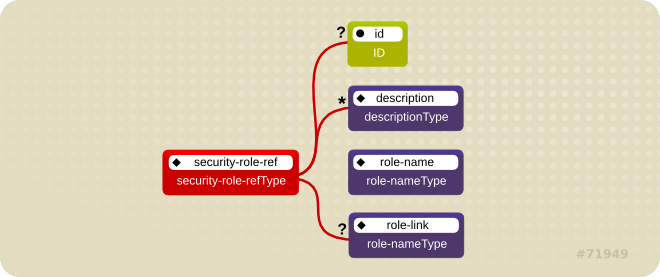此内容没有您所选择的语言版本。
10.2.2. Security References
Both Enterprise Java Beans (EJBs) and servlets can declare one or more <security-role-ref> elements.
Figure 10.1. Security Roles Reference Model
This element declares that a component is using the <role-name> element's
role-nameType attribute value as an argument to the isCallerInRole(String) method. By using the isCallerInRole method, a component can verify whether the caller is in a role that has been declared with a <security-role-ref> or <role-name> element. The <role-name> element value must link to a <security-role> element through the <role-link> element. The typical use of isCallerInRole is to perform a security check that cannot be defined by using the role-based <method-permissions> elements.
Example 10.1. ejb-jar.xml descriptor fragment
Note
This fragment is an example only. In deployments, the elements in this section must contain role names and links relevant to the EJB deployment.
Example 10.2. web.xml descriptor fragment
